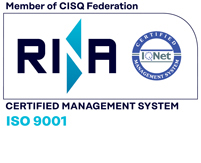Russia - Iran
RUSSIA, FIFTH TOP SOURCE OF IRAN’S NON-OIL IMPORTS IN 4 MONTHS
In the Iranian calendar year 1403 (ending March 20, 2025), Iran imported $1.3 billion worth of non-oil goods from Russia, making it Iran’s seventh-largest source of imports. In April, Tehran and Moscow held their 18th Joint Economic Committee meeting in Moscow, culminating in a memorandum of understanding covering wide-ranging cooperation. Iranian Oil Minister Mohsen Paknejad emphasized that the agreements provide a framework for long-term collaboration in multiple fields, including oil and gas development, cooperation with Gazprom, establishing a gas hub in Iran, petrochemicals, and oil product swaps. Nuclear energy projects for peaceful purposes were also agreed upon. Other priorities included advancing the International North–South Transit Corridor (INSTC), with focus on completing the Rasht-Astara railway, expanding banking cooperation, and boosting collaboration in agriculture, health, and customs. Iran’s ambassador to Russia, Kazem Jalali, called the current phase a “golden era” of bilateral ties, citing the newly ratified Comprehensive Strategic Partnership Treaty. He stressed Russia’s $10 billion investment in the INSTC and growing transit volumes—3.7 million tons in 2022 rising to 33 million tons in 2023—with targets of three million tons in early 2025. He described the corridor as a strategic necessity for Russia and a historic opportunity for Iran to become a global transit hub akin to a “second Suez Canal.” Deputy Oil Minister Ali Mohammad Mousavi highlighted that the committee reflects strong political will and serves as a year-round platform for negotiations and achievements. He underlined Tehran’s commitment following the signing and ratification of the strategic partnership agreement. On the sidelines, Paknejad met Russian Deputy Prime Minister Alexander Novak, with both sides reaffirming the importance of the long-term treaty signed by their presidents. Paknejad said vast potential remains untapped, while Novak reported a 13 percent increase in bilateral trade in 2024, particularly in energy and transport infrastructure. In May, the two countries also advanced financial integration by launching the second phase of linking Iran’s “Shetab” card system with Russia’s “Mir” network, enabling Russian visitors to use “Mir Pay” in Iran. The project aims to expand cross-border financial services through three stages. (ICE TEHERAN)
Fonte notizia: Tehran Times




